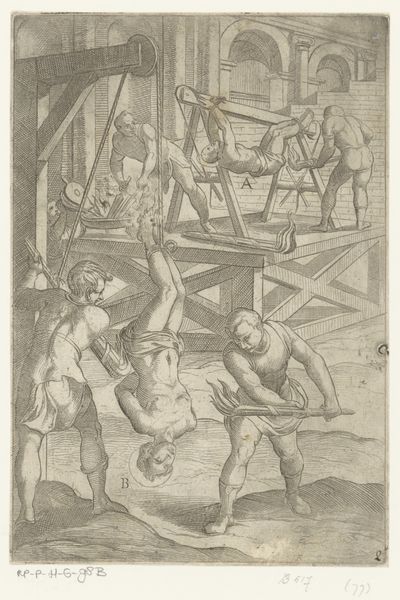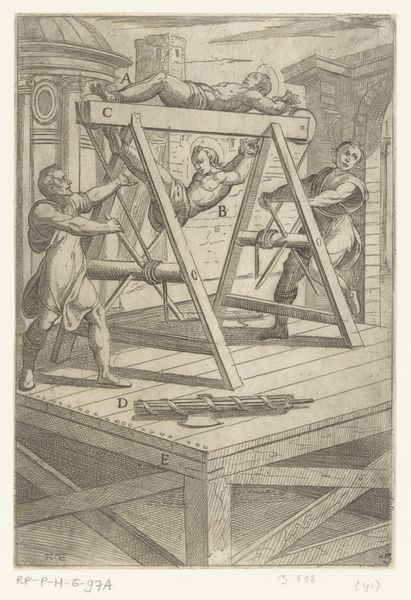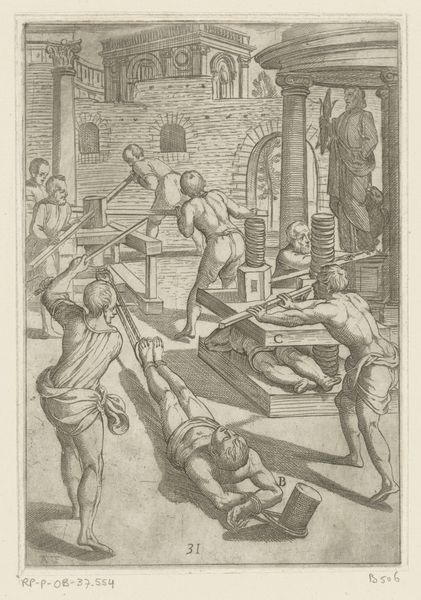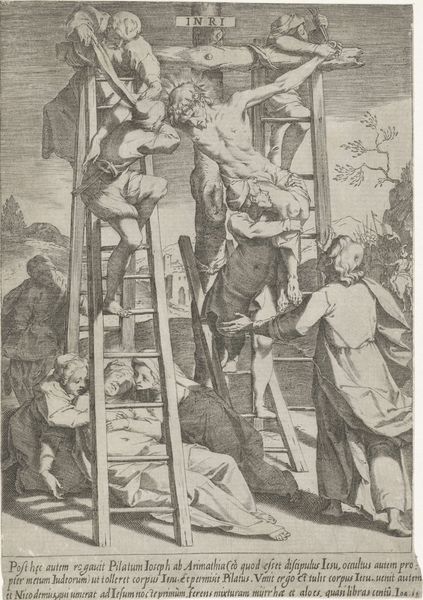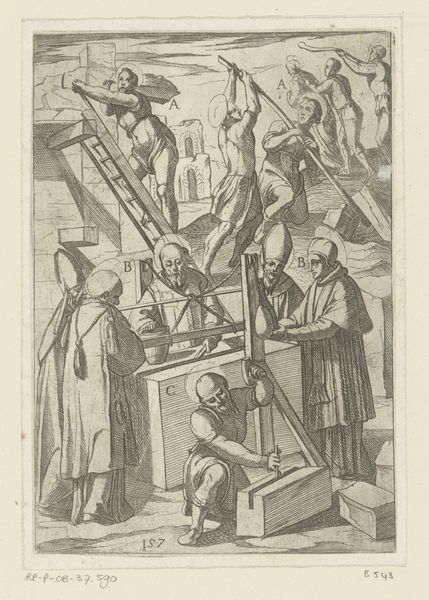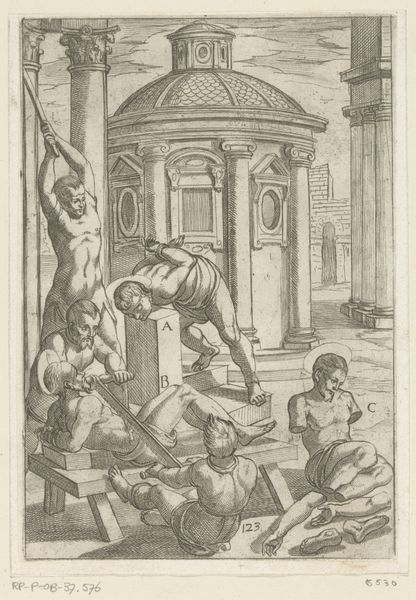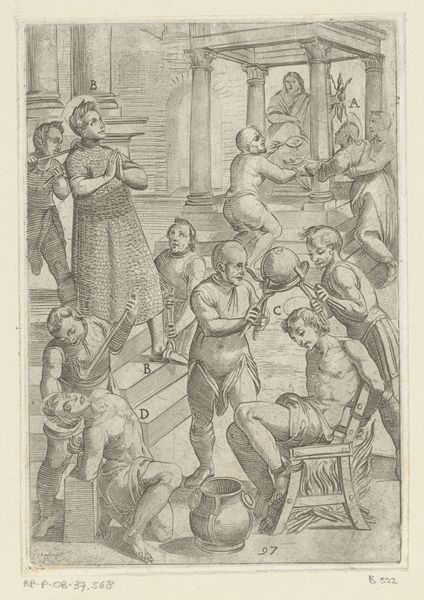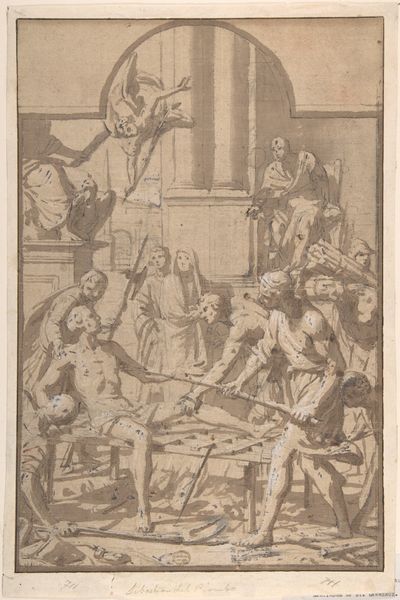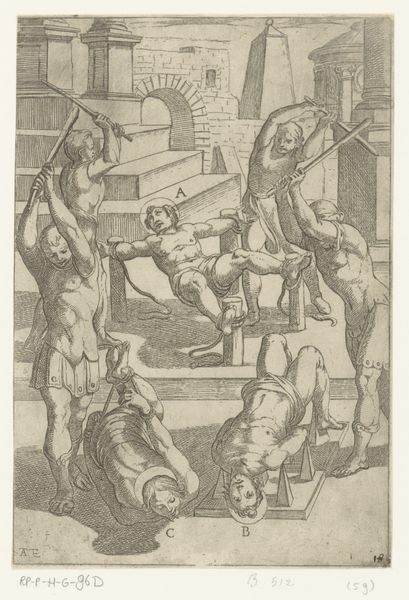
print, etching, engraving
#
narrative-art
#
baroque
# print
#
pen illustration
#
pen sketch
#
etching
#
figuration
#
history-painting
#
engraving
Dimensions: height 194 mm, width 133 mm
Copyright: Rijks Museum: Open Domain
Editor: We're looking at "Foltering met kokende olie," or "Torture with Boiling Oil," an etching made between 1565 and 1630, attributed to Antonio Tempesta and housed in the Rijksmuseum. It’s quite gruesome. What immediately strikes me is the intricate detail despite the difficult subject matter. The scene is incredibly busy. How do you interpret this work, beyond the obvious brutality? Curator: Brutality indeed! It leaps out, doesn't it? But beyond the spectacle, consider the context. Tempesta, living through religious wars, was capturing something of his era's soul—or its shadow, perhaps. That exacting detail you noticed? That’s classic Baroque. It's not just about illustrating the torture; it's about inviting you into it, forcing you to witness it, to feel the heat, to consider justice, power, and, ultimately, belief. Do you see how the composition seems to push you forward? Editor: I do. It's almost cinematic in that way. There’s a kind of dreadful perspective, almost as if the image is consuming you. Curator: Exactly! It's performative. The stage is set, the players are posed. What does that tell you about the role of suffering in their world? It was public, instructive. These prints weren't just art; they were propaganda, visual sermons, grim reminders of what happens when you step outside the lines. Editor: So, it's not just the literal depiction of torture but the implied message being sent to the masses? Curator: Precisely! That theatricality is the hook, drawing you in, then sinking the point home. Consider the figures—they are strong. And who were Tempesta’s audience? Educated people, the wealthy and powerful, and maybe the tortured. Food for thought, eh? Editor: Definitely. I went in seeing the gore, but I'm leaving with a much richer understanding of the cultural and historical implications. Curator: And I think I saw how to use film language as a method of interpreting these works. Thank you!
Comments
No comments
Be the first to comment and join the conversation on the ultimate creative platform.
